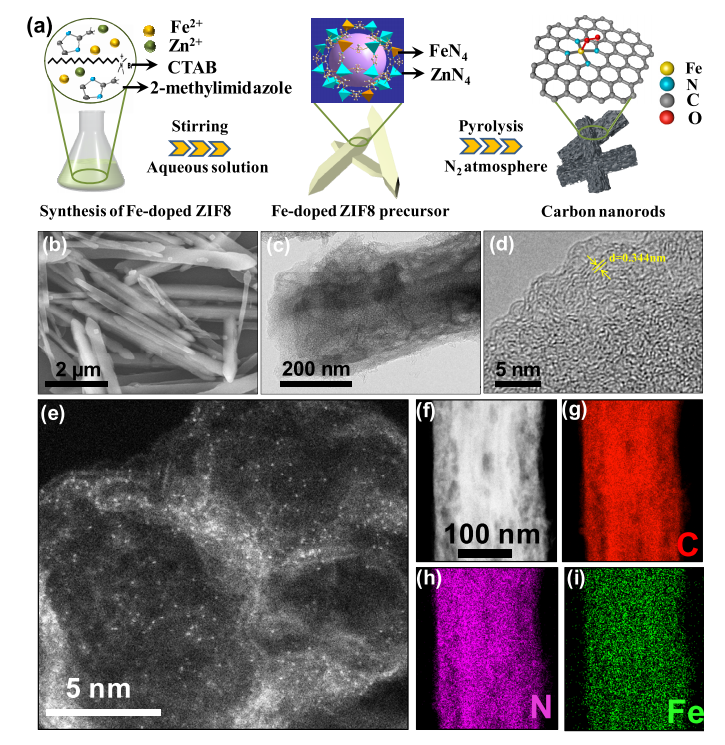Green Method to Synthesize Highly-efficient and Stable Single-atom Iron Catalysts
Oxygen reduction reaction (ORR) is of utmost significance for renewable and sustainable energy systems, such as fuel cells and metal-air batteries. One major bottleneck for their commercial application lies in the sluggish kinetics of ORR at the cathode. Exploring stable non-precious catalysts with excellent activities for electrochemical oxygen reduction is vital for minimizing noble metal consumption in the study of sustainable energy technologies.
Over the past few years, single-atom Fe homogenously anchored on N-doped carbon (Fe-Nx/C) catalysts have attracted increasing attention as the most promising candidate because of the maximum atom utilization efficiency and high intrinsic activity. However, environmentally hazardous and toxic solvents as well as acid are necessarily needed in the synthesis of Fe-Nx/C catalysts, restricting the application on a large scale.
“Considering the overall factors of practical application, we must propose a green synthesis method for highly efficient catalysts,” Prof. LIANG Hanpu from Qingdao Institute of Bioenergy and Bioprocess Technology (QIBEBT), Chinese Academy of Sciences (CAS).
Recently, the research team led by Prof. LIANG report the facile and environment-friendly synthesis of a single-atom Fe catalyst.
In general, iron doped ZIF8 precursor was synthesized in aqueous solution, followed by one-step high temperature pyrolysis without the need for subsequent acid leaching, then rod-like nitrogen doped carbon nanorods decorated with isolated Fe-N4 sites (Fe-SA/NCS) could be obtained.
The as-synthesized Fe-SA/NCS catalyst exhibited remarkable electrocatalytic performance and long-term stability for ORR both in KOH and HClO4, which is attributed to Fe-N4 active sites. Moreover, the Zinc-Air battery with Fe-SA/NCS as cathode material exhibited a relatively low charge/discharge overpotential, higher power density as well as long-term rechargeable stability compared to commercial JM Pt/C catalyst.
The synthetic strategy developed in this study affords an efficient approach for the green synthesis of non-precious single-atom catalysts for high-performance fuel cells and metal-air batteries.
The related progress was published in ACS Sustainable Chemistry & Engineering.

Fig. 1: (a) Schematic illustration for the synthetic procedure and (b)-(i) electron microscopy characterization of Fe-SA/NCS. (Image by YANG Chen)
(Text by YANG Chen)
Contact:
CHENG Jing
Qingdao Institute of Bioenergy and Bioprocess Technology, Chinese Academy of Sciences
Tel: 86-532-80662647/80662622
E-mail: chengjing@qibebt.ac.cn